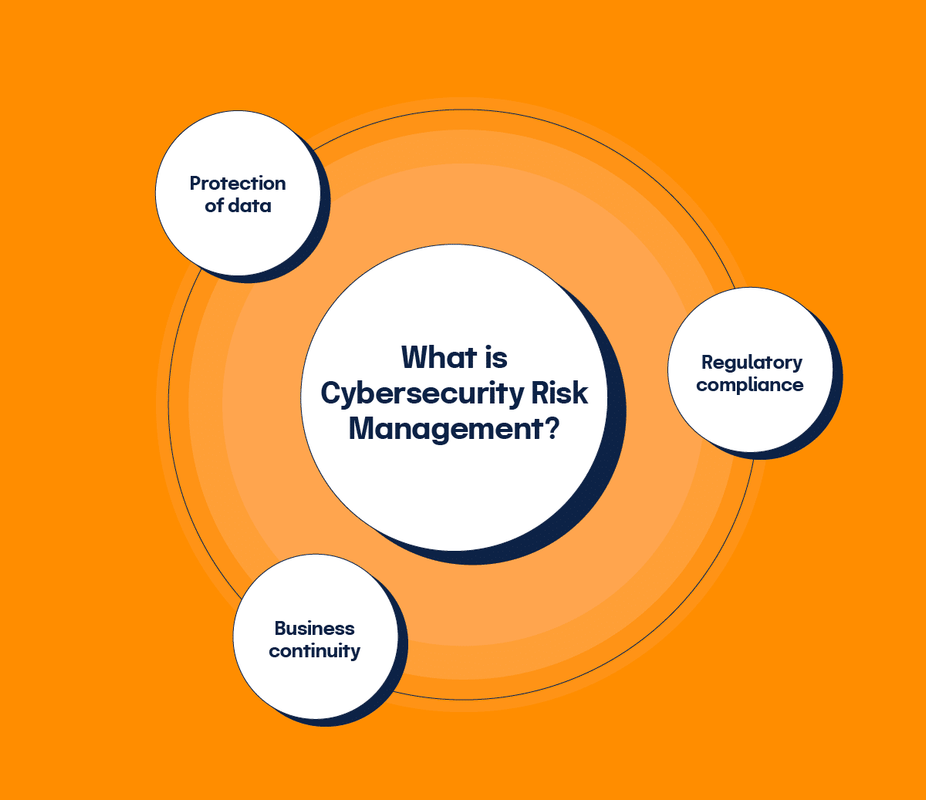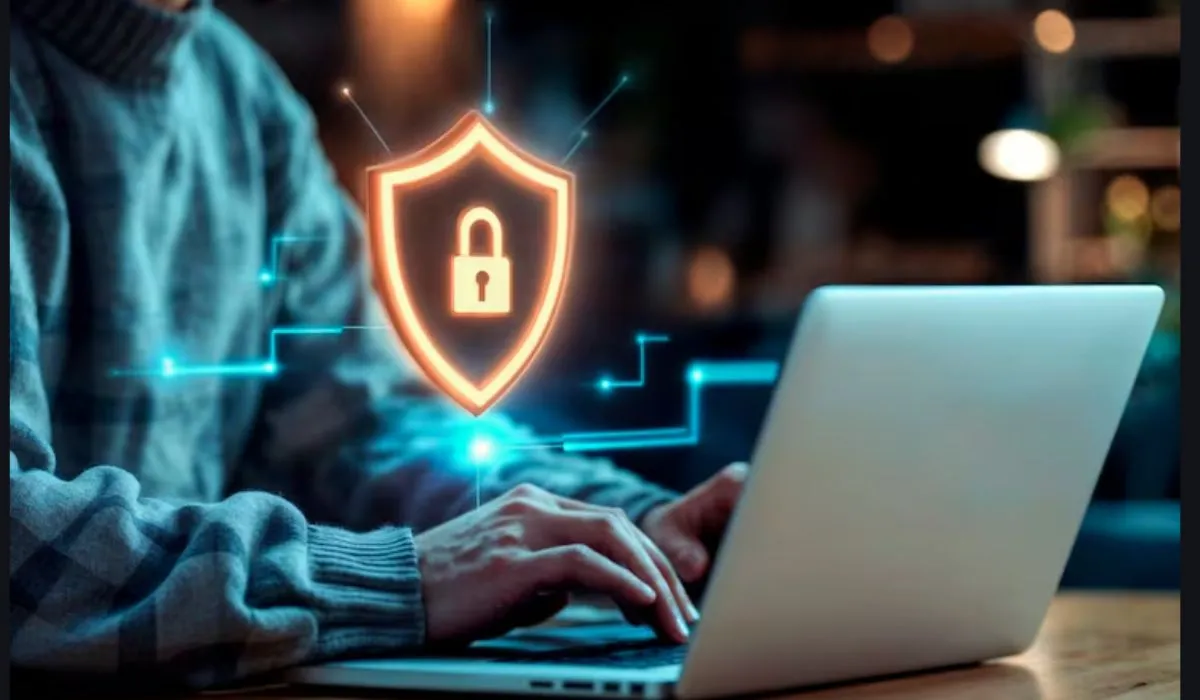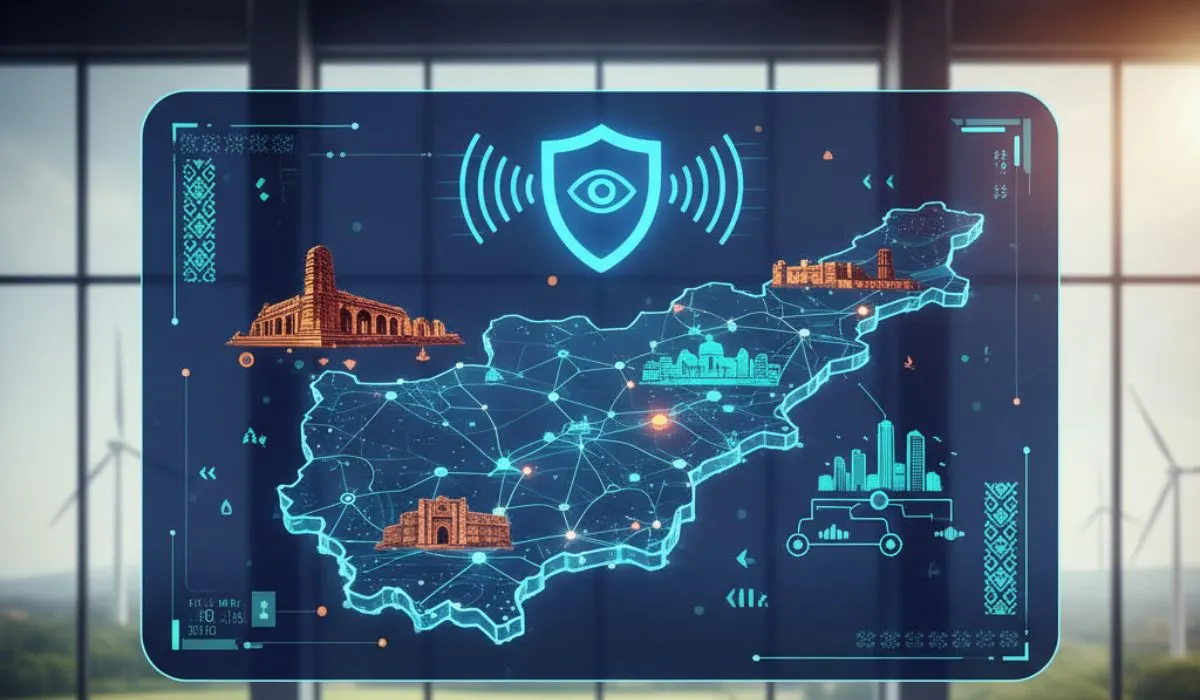Let’s Get Real: Cyber Threats Aren’t Slowing Down
Think cybercrime only happens to big companies? Think again. In 2025, even a small local shop using cloud billing software can get hit by ransomware. An incorrect click of a trainee, and Poof - data disappears.
Therefore, we must talk about cyber security risk management and best practices. This isn’t a topic just for your IT guy. Whether you're a founder, freelancer, or finance head, you need to know how to protect your data, customers, and systems.
So, What Does Cyber Risk Management Actually Mean?
It’s looking at:
- What tech and data you rely on
- Where the gaps or weak spots are
- What kind of attacks might happen
- How bad it would be if they did
- And what you can do to stop it or reduce the damage
You're not trying to make everything hacker-proof (impossible). You're just making sure you're not the easiest target in the room.
Compliance Isn’t Optional Anymore
You might think rules and regulations are just bureaucracy—but not in this case. Cybersecurity compliance standards exist for a reason: to protect customers, businesses, and even governments from chaos.
Depending on your industry, here’s what you might have to deal with:
- ISO 27001 – for global data safety
- NIST Framework – standard in U.S. federal systems
- PCI-DSS – if you accept card payments
- HIPAA – if you’re in healthcare
Ignore these, and it’s not just bad PR. You could face serious legal heat.
Best Practices That Actually Make a Difference
Here are best practices in cybersecurity risk management that anyone can apply—no tech jargon, promise.
1. Stay informed
- Imagine leaving your house unlocked every night. Crazy, right? Not checking your cyber vulnerabilities is pretty much the same.
- Run regular audits. Get someone to test your defenses. Better to find the holes yourself than let an outsider do it.
2. Multi-Factor Authentication Is a Must
Passwords alone? Not enough anymore. MFA is like putting a second lock on your door. Or better—an electric fence.
3. Update Everything—And Mean It
That “remind me later” button on updates? Yeah, that’s where hackers slip in. Patches exist for a reason. Install them. Always.
4. Teach Your Team—They’re Your Frontline
If your team can’t spot a phishing email, you're toast. Run fun, simple training sessions. Teach them to double-check links and think before clicking.
5. Encrypt What Matters
Configure your sensitive data - both when saved and when sent. Encrypt it. If someone steals it, they still can't read it.
6. Back Up, Then Back Up Again
If ransomware hits you, a backup is your lifeline. Store backups offline too.
Don’t Ignore the Cloud—Hackers Aren’t
These days, businesses are storing everything in the cloud. From customer data to payroll. And sure, it’s convenient. But it’s not bulletproof. You need cloud security practices.
- Give access only to those who truly need it
- Monitor user activity and login attempts
- Encrypt data in your cloud accounts
- Audit your cloud providers regularly
- Turn off accounts immediately when employees leave
You wouldn’t leave your physical office wide open—don’t leave your cloud office open either.
Strategy Time: Cybersecurity Risk Management for Smart Businesses

If you’re serious about staying safe, here are cybersecurity risk management strategies for businesses that are practical and powerful:
Adopt Zero Trust (Sounds Harsh, But Works)
Assume nothing and verify everything. Even insiders can make mistakes—or worse.
Use Monitoring Tools
Tools like Splunk, SentinelOne, or even Google Security keep an eye on your digital traffic and alert you if anything weird pops up.
Do Pen Tests—Hire a “Good” Hacker
Ethical hackers can find holes in your system. Think of them as a net pipe - they fix the leak before the flood.
Limit Who Can Access What
Don’t give everyone full access. Your intern doesn’t need access to financial data. Use role-based controls.
Automate Your Security Fixes
Set your updates and patches to install automatically. One less thing to forget.
Small Businesses Aren’t Safe Either
Let’s bust a myth: “We’re too small to be hacked.” Nope. Hackers love small businesses because they usually have weak defenses.
Here’s how to keep things tight without burning your wallet:
- Use tools like Bitdefender or Malwarebytes
- Invest in a secure password manager
- Outsource to a managed security service if needed
- Run monthly backup drills
- Stay educated—read security blogs or follow updates
You don’t need to be perfect. Just make it hard enough that attackers move on to the next easy target. Small businesses also need a strong cybersecurity framework.
How Do You Know It’s Working?
You’ve put in the work—but is it paying off?
Track this stuff:
- How fast are you patching vulnerabilities?
- Are employees reporting suspicious emails?
- Has your incident response time improved?
- Are you passing security audits?
- Any attempted breaches blocked recently?
Treat this like a business dashboard. Check in every quarter, and adjust as needed.
How to Prevent Security Breaches (For Real)
There’s no 100% guarantee, but here are security breach prevention steps that put you way ahead of the curve:
- Turn off unused ports and services
- Lock devices when not in use
- Use VPNs on public Wi-Fi
- Keep sensitive systems off shared networks
- Set alerts for unusual activity (logins, downloads, etc.)
One weak link can open the door. Tighten your chain.
What’s Coming Next in Cyber Risk?

Cybersecurity in 2025 isn’t static. Here’s what’s already changing:
- AI-based threat detection is now mainstream
- Biometric logins are replacing passwords
- Quantum computing is reshaping encryption
- The cost of non-compliance is going way up
Stay agile. The best practices for risk mitigation in cybersecurity are developing with the world - not behind it.
Quick Cheat Sheet
|
Best Practice |
Why It Matters |
|
Risk Assessments |
Find weak points early. |
|
MFA & Encryption |
Stops basic attacks. |
|
Regular Updates |
Patches known issues. |
|
Team Training |
Reduces human error. |
|
Backup Systems |
Keeps you running post-attack. |
|
Cloud Safety |
Protects modern workspaces. |
|
Zero Trust |
Stops insider breaches. |
|
Compliance Standards |
Avoids legal fines. |
Final Thoughts
At the end of the day, cyber security risk management and best practices are not just huge technical companies. It is for someone who uses e -mail, handles customer data, stores files in the cloud or makes the online payment process.
Which is… all of us. Start with the basics. Don’t wait until you’ve been hacked. Build smart habits now, and in the future-you will thank you.
FAQ's:-
Q1. My office just uses emails and Google Docs — do I really need to worry about cybersecurity?
Honestly? Yes. Even if you’re just sending docs and logging into emails, that’s all it takes for someone shady to break in. One bad link or sketchy attachment and boom — your whole system can get messed up.
Q.2 Everyone says “don’t reuse passwords.” Is that just paranoia or what?
Not paranoia. Just reality. If one of your passwords leaks in a data breach (and that happens a lot), hackers will try that same one everywhere. Gmail, Instagram, bank app — you name it. If you use one password like a master key, you’re basically handing them the keys to your life.
Q3. I hate techy stuff. What’s the bare minimum I can do to be safe online?
Here’s the bare minimum:
- Turn on 2FA (you know, the code to your phone)
- Don’t click weird links. Ever.
- Back up your files (yes, even that folder called “random crap”)
Three things. That’s it. You do that, you’re already safer than most.
Q4. What if my employee clicks a bad link? Am I screwed?
Unfortunately… maybe. One careless click can install malware that spreads like wildfire. Your whole system could be toast. That’s why it’s smart to train your team — even if it’s just a 10-minute heads-up about phishing emails.
Q5. Is antivirus software enough?
Antivirus helps, sure. But it won’t stop everything. You need backups. You need common sense. You need to keep stuff updated. Antivirus is just one piece of the puzzle — not the whole picture.













